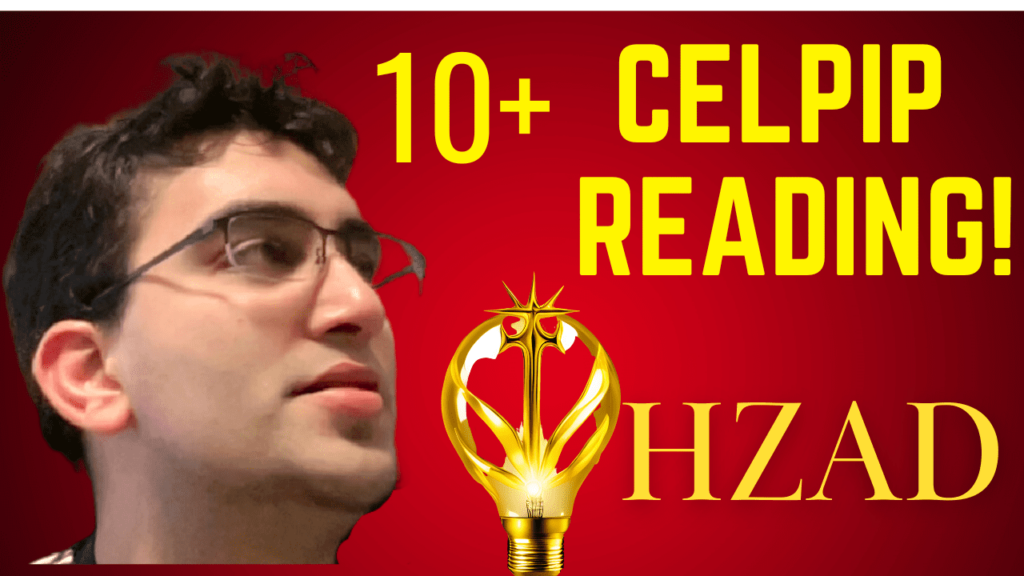Introduction to CELPIP Reading Part Three
In this exploration of the CELPIP Reading Part Three, we delve into the complexities that make it a challenging section, second only to Part Four. For those preparing for the CELPIP test, understanding Part Three is crucial, and we will subsequently cover Part Four in the next video. Subscribing to the channel is recommended for updates on upcoming tutorials.
Structure of CELPIP Reading 3:
CELPIP Reading Part Three presents a series of paragraphs, labeled from A onwards, accompanied by a set of questions numbered from 1 to n. Each question requires the test-taker to match sentences with the appropriate paragraph. If the information for a particular question isn’t found in any paragraph, option E, denoting ‘Not Given’, is to be chosen. This part can be confusing as the information is often paraphrased, making it difficult to spot the ‘Not Given’ items. A simple strategy will be shared to tackle this effectively.
___
Why do students always fail CELPIP Reading? This course not only explains that but GUARANTEES your results or your MONEY-BACK! With 100,000 copies sold, check out why this course has internet’s best reviews (IMMEDIATE ACCESS AVAILABLE): https://hzadeducation.com/product/classes-celpip/
____
Strategies for Success
There are generally two strategies that test-takers employ:
Strategy One:
- Start with question number one.
- Sequentially go through paragraphs A, B, C, and D to find the match.
- If a match isn’t found, mark it as ‘E’ for ‘Not Given’ and proceed to the next question.
Strategy Two:
- Read and comprehend all questions from 1 to n.
- Begin with paragraph A, read and understand it thoroughly.
- Match paragraph A with all the questions it corresponds to.
- Proceed to paragraph B, and continue the process.
Among these, Strategy Two is highly recommended for its efficiency and effectiveness.
Next: Spotting Keywords and Paraphrasing
Overall, understanding keywords is vital. For instance, “Aboriginal Nations” is a key term that isn’t easily paraphrased. However, phrases like “commercial activities” might be expressed differently, such as “market forces” or “buying and selling”. Anticipating these paraphrases is crucial.
Paraphrasing Example:
Original Sentence: “Park visitation is dependent upon approval from Aboriginal Nations.”
Paraphrased Versions:
- “You need to get a signature from the Aboriginal Nations’ chief to visit the park.”
- “Entering the park requires approval from a senior manager in the Aboriginal community.”
Thus, by paraphrasing in your head, you stay a step ahead, making it easier to spot the intended meaning even when the keywords are not used verbatim.
Memory Techniques
Furthermore, remembering all the questions can be daunting. A helpful technique is to create vivid images in your mind related to the concepts you’re trying to remember. This visual memory aid makes recalling information easier.
Practical Application
Now, let’s apply these techniques to a specific example, question number nine: “The park is a site to a Canadian geographical landmark.”
Paraphrased Possibilities:
- “The highest peak in Alberta is within the park.”
- “A prominent volcano is a feature of the park.”
- “It’s home to a landmark akin to Niagara Falls.”
Reading and Matching:
While reading paragraph B, look for any mention of a geographical feature that aligns with the paraphrased versions. This approach simplifies identifying the correct match.
See the complete passage and explanation here: https://www.youtube.com/watch?v=GWoGQgf2XXc&t=250s
Overall, CELPIP Reading Part Three demands a strategic approach, focusing on keyword identification, paraphrasing, and employing memory techniques. Strategy Two, reading all the questions first, then matching them with the paragraphs, is more effective and time-efficient. Paraphrasing and creating mental images not only aid in memory but also prepare you for the varied ways information can be presented. With these strategies, tackling the CELPIP Reading Part Three becomes a manageable and less daunting task.


